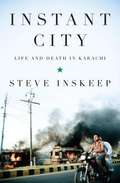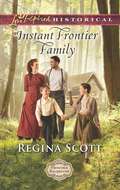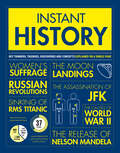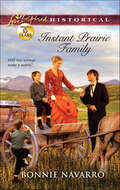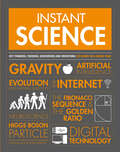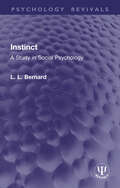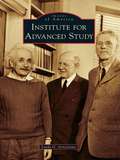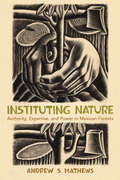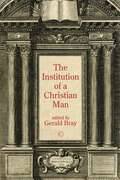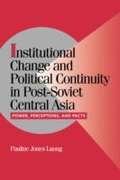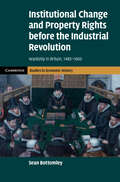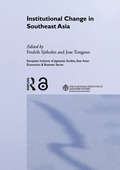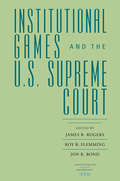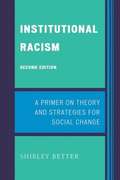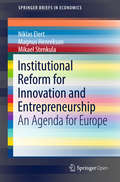- Table View
- List View
Instant City
by Steve InskeepMorning Edition cohost Steve Inskeep presents a riveting account of a single harrowing day in December 2009 that sheds light on the constant tensions in Karachi, Pakistan—when a bomb blast ripped through a Shia religious procession, followed by the torching of hundreds of businesses in Karachi’s commercial district. Through interviews with a broad cross section of Karachi residents, Inskeep peels back the layers of that terrible day. It is the beginning, and a constant touchstone, in a journey across the city’s epic history and its troubled present Thrilling and deeply researched, Instant City tells the story of one of the world’s fastest-growing metropolises and the forces competing to shape its future. .
Instant Engineering: Key Thinkers, Theories, Discoveries and Inventions Explained on a Single Page (Instant Knowledge)
by Joel LevyKey thinkers, theories, discoveries, and inventions explained on a single page! Instant Engineering pulls together all the pivotal engineering theories and discoveries into one concise volume. Each page contains a distinct “cheat sheet,” which tells you the most important facts in bite-size chunks, so you can feel like an expert in minutes! From Archimedes to Elon Musk, from pumps and pulleys to the steam engine, and from the canal boat to the space rocket—every key figure, theory, or term is expressed in succinct and lively text and graphics. Perfect for the knowledge-hungry and time-poor, this collection of graphics-led lessons makes engineering interesting and accessible. Everything you need to know—and more!—packed into one convenient volume.
Instant Father
by Donna GartshoreThis new father has a lot to learn …and she&’s perfect for the jobBachelor Paul Belvedere is overwhelmed with raising his recently orphaned young nephew. Fortunately, he&’s found an ally in violet-eyed teacher Charlotte Connelly. Paul might even be able to trust her with his shameful secret. But when he discovers that Charlotte is planning on leaving town on a mission trip, Paul is caught between saying goodbye…or teaching her an important lesson in love.From Love Inspired: Uplifting stories of faith, forgiveness and hope.
Instant Frontier Family
by Regina ScottLITTLE MATCHMAKERS Maddie O'Rourke's orphaned half brother and half sister have arrived safely in Seattle-with a man they hope she'll wed! Though Michael Haggerty's not the escort she planned for, Maddie allows him to work off his passage by assisting in her bakery...and helping care for her siblings. But she'll never risk her newfound independence by marrying the strapping Irishman-or anyone else. In New York, Michael ran afoul of a notorious gang. Traveling west was a necessity, not a choice. The longshoreman grew fond of his young charges, and now he's quickly becoming partial to their beautiful sister, too. So when danger follows him, threatening Maddie and the children, he'll do anything to protect them-and the future he hopes to build.
Instant History: Key Thinkers, Theories, Discoveries and Concepts Explained on a Single Page (Instant Knowledge)
by Sandra LawrenceKey thinkers, theories, discoveries, and concepts each explained on a single page!Instant History pulls together pivotal moments from history into one concise volume. Each page contains a distinct &“cheat sheet,&” which tells you the most important facts in bite-size chunks, so you can feel like an expert in minutes! From second-wave feminism to Stalinism, the invention of the car to the Battle of the Somme, and the Russian Revolution to the Industrial Revolution, every key event, character, or turning point is expressed in succinct and lively text and graphics. Perfect for the knowledge-hungry and time-poor, this collection of graphics-led lessons makes history interesting and accessible. Everything you need to know—and more!—packed into one convenient volume.
Instant Mathematics: Key Thinkers, Theories, Discoveries And Concepts Explained On A Single Page (Instant Knowledge)
by Paul Parsons Gail DixonKey thinkers, theories, discoveries, and concepts each explained on a single page! Instant Mathematics pulls together all the pivotal mathematical theories and discoveries into one concise volume. Each page contains a distinct “cheat sheet,” which tells you the most important facts in bite-size chunks, so you can feel like an expert in minutes! From zero to Riemann Hypothesis, from primes to irrational numbers, and from Pythagoras to John Nash and Roger Penrose—every key figure, theory, or term is expressed in succinct and lively text and graphics. Perfect for the knowledge-hungry and time-poor, this collection of graphics-led lessons makes math interesting and accessible. Everything you need to know—and more!—packed into one convenient volume.
Instant Prairie Family
by Bonnie NavarroWill Hopkins's new housekeeper is the prettiest young woman he's ever seen-and that's the problem. Will thought Abigail Stewart would be a middle-aged matron well suited to hardscrabble prairie life. Even if his young sons are entranced by her wholesome kindness, his only option is to send Abby back east. For the sake of propriety...and his guarded heart.Answering the newspaper advertisement was Abby's chance of escape from her unhappy home. But now her employer has turned out to be a rugged widower instead of a widow. A marriage in name only will allow her to remain long enough to find another job. Or until a misunderstanding becomes the means to a second-chance family....
Instant Prairie Family and Cowboy to the Rescue
by Louise M. Gouge Bonnie NavarroA perfect mismatch?Instant Prairie Family by Bonnie NavarroAnswering the newspaper advertisement for a housekeeper was Abigail Stewart’s chance of escape from her unhappy home. But her employer, Will Hopkins, has turned out to be a rugged widower with young sons instead of a widow. A marriage in name only will allow her to remain long enough to find another job. Or until a misunderstanding becomes the means to a second-chance family…Cowboy to the Rescue by Louise M. GougeThough Georgia belle Susanna Anders agrees to accompany her father on a silver prospecting trip to Colorado, her heart belongs to the South. Then charming cowboy Nate Northam saves her father’s life and gives them shelter at his ranch. Feeling gratitude is only natural, but falling for a Yankee? Soon shocking revelations compel both Nate and Susanna to choose between loyalty to the past or the promise of a bold new love.
Instant Science: Key Thinkers, Theories, Discoveries and Concepts Explained on a Single Page (Instant Knowledge)
by Jennifer CrouchKey thinkers, theories, discoveries, and inventions each explained on a single page! Instant Science pulls together all the pivotal scientific knowledge and thought into one concise volume. Each page contains a distinct &“cheat sheet,&” which tells you the most important facts in bite-size chunks, so you can feel like an expert in minutes! From cosmic foam to Curie, from gravity to climate change, and from nuclear fission to neuroscience—every key figure, discovery, or invention is explained with succinct and lively text and graphics. Perfect for the knowledge-hungry and time-poor, this collection of graphics-led lessons makes science interesting and accessible. Everything you need to know—and more!—packed into one convenient volume.
Instead Of The War Drum: The Story Of Ashoka
by Uma KrishnaswamiKing Ashoka was a fearsome conqueror in ancient India. After seeing the destruction and death from his battles, he decided to forgo war and institute peace and Buddhism in his kingdom. Learn about his peaceful reign and the lasting changes he created in India.
Instinct, Environment and Behaviour (Psychology Revivals)
by Stephen LeaWhat can the evolution of animal behaviour tell us about human behaviour? More specifically, how good an account of animal behaviour can we give in terms of evolution, and how do humans fit in with or deviate from the pattern established for other animals? The biological approach to the study of animal behaviour has important implications for psychology, but it is distinctly different. Originally published in 1984, this book provides a basic introduction to biological theories about behaviour, from the classic ethological tradition of Lorenz and Tinbergen to the later sociobiological approach. The principles of experimentation and research involved are assessed critically, especially with regard to their implications for the study of human behaviour. Written specifically for those with little biological knowledge, this book will still be of interest to students of biology and introductory psychology alike.
Instinct: A Study in Social Psychology (Psychology Revivals)
by L. L. BernardOriginally published in 1925, according to the preface, Instinct: A Study in Social Psychology is the result of many years of interrupted labors that began in a graduate seminar in 1909–1910, when the author attempted to apply Professor McDougall’s classification of instincts to the classification of criminals. The immediate result was the conviction that McDougall’s instincts were habits, and further constructive work found issue in an unpublished report on “Instinct and the Social Sciences,” taking issue with McDougall’s viewpoint regarding the significance of the theory of instincts then prevalent for the social sciences. Finally completed after many years in the making, this work is the result of the author’s investigations on the topic of instinct. Today it can be read in its historical context.This book is a re-issue originally published in 1925. The language used and views portrayed are a reflection of its era and no offence is meant by the Publishers to any reader by this re-publication.
Institute for Advanced Study
by Linda G. ArntzeniusFounded in 1930, the Institute for Advanced Study was conceived of high ideals for the future of America and its system of higher education, and was made possible by sibling philanthropists Louis Bamberger and Caroline Bamberger Fuld. Guided by education expert Abraham Flexner, the Bambergers created an independent institution devoted to the pursuit of knowledge. The Institute for Advanced Study opened its arms to scholars "without regard to race, creed, or sex." It provided a haven for Jewish intellectuals fleeing Nazi Germany, including Albert Einstein, who remained on the permanent faculty until his death in 1955, and became the intellectual home of such luminaries as J. Robert Oppenheimer, John von Neumann, Kurt Gödel, Marston Morse, Oswald Veblen, Hermann Weyl, Homer A. Thompson, Erwin Panofsky, George F. Kennan, Clifford Geertz, and Freeman Dyson.
Instituting Nature
by Andrew S. MathewsGreater knowledge and transparency are often promoted as the keys to solving a wide array of governance problems. In Instituting Nature, Andrew Mathews describes Mexico's efforts over the past hundred years to manage its forests through forestry science and biodiversity conservation. He shows that transparent knowledge was produced not by official declarations or scientists' expertise but by encounters between the relatively weak forestry bureaucracy and the indigenous people who manage and own the pine forests of Mexico. Mathews charts the performances, collusions, complicities, and evasions that characterize the forestry bureaucracy. He shows that the authority of forestry officials is undermined by the tension between local realities and national policy; officials must juggle sweeping knowledge claims and mundane concealments, ambitious regulations and routine rule breaking. Moving from government offices in Mexico City to forests in the state of Oaxaca, Mathews describes how the science of forestry and bureaucratic practices came to Oaxaca in the 1930s and how local environmental and political contexts set the stage for local resistance. He tells how the indigenous Zapotec people learned the theory and practice of industrial forestry as employees and then put these skills to use when they become the owners and managers of the area's pine forests--eventually incorporating forestry into their successful claims for autonomy from the state. Despite the apparently small scale and local contexts of this balancing act between the power of forestry regulations and the resistance of indigenous communities, Mathews shows that it has large implications--for how we understand the modern state, scientific knowledge, and power and for the global carbon markets for which Mexican forests might become valuable.
Instituting Nature: Authority, Expertise, and Power in Mexican Forests (Politics, Science, and the Environment)
by Andrew S. MathewsA study of how encounters between forestry bureaucrats and indigenous forest managers in Mexico produced official knowledge about forests and the state.Greater knowledge and transparency are often promoted as the keys to solving a wide array of governance problems. In Instituting Nature, Andrew Mathews describes Mexico's efforts over the past hundred years to manage its forests through forestry science and biodiversity conservation. He shows that transparent knowledge was produced not by official declarations or scientists' expertise but by encounters between the relatively weak forestry bureaucracy and the indigenous people who manage and own the pine forests of Mexico. Mathews charts the performances, collusions, complicities, and evasions that characterize the forestry bureaucracy. He shows that the authority of forestry officials is undermined by the tension between local realities and national policy; officials must juggle sweeping knowledge claims and mundane concealments, ambitious regulations and routine rule breaking. Moving from government offices in Mexico City to forests in the state of Oaxaca, Mathews describes how the science of forestry and bureaucratic practices came to Oaxaca in the 1930s and how local environmental and political contexts set the stage for local resistance. He tells how the indigenous Zapotec people learned the theory and practice of industrial forestry as employees and then put these skills to use when they become the owners and managers of the area's pine forests—eventually incorporating forestry into their successful claims for autonomy from the state. Despite the apparently small scale and local contexts of this balancing act between the power of forestry regulations and the resistance of indigenous communities, Mathews shows that it has large implications—for how we understand the modern state, scientific knowledge, and power and for the global carbon markets for which Mexican forests might become valuable.
Institution of a Christian Man
by Gerald BrayCompiled during the early years of the Reformation, Institution of a Christian Man lays out the principles of the nascent Church of England. In his definitive new edition, Gerald Bray charts the development of this text from the first version introduced by Archbishop Thomas Cranmer and his cohort of bishops, to the extensive edits made by Henry VIII himself, and finally to the version written by Bishop Edmund Bonner under the radically different circumstances of Mary I's reign. By combining the Bishops' Book and the King's Book into a single text - rather than in sequence - Bray shows which sections were added, deleted, and retained throughout the revisions. This process allows the Reader to reconstruct the texts and, at the same time, follow the process by which one was transformed into the other. Bishop Bonner's Book, which appears separately, illustrates additional changes and elaborations from the previous two books. Such a comparative study in a user-friendly and accessible style has never been published before. Although written nearly 500 years ago, much of what these books pronounce is still valid and can be addressed to contemporary use. A thorough analysis of content also sheds light on a neglected phase of the Reformation, and provides a unique insight into the theological development that characterised the earliest stages of the Church of England.
Institutional Change and Political Continuity in Post-Soviet Central Asia: Power, Perceptions, and Pacts
by Pauline Jones LuongAlthough the three former Soviet Republics of Kazakhstan, Kyrgyzstan, and Uzbekistan shared similar economic and political histories, they developed surprisingly different electoral regimes in the wake of the fall of the Soviet Union. Luong (political science, Yale U. ) seeks to unravel the puzzle of the causes of these institutional developments. She argues that the negotiations over electoral systems lay bare asymmetries of power that can then inform not only the nature of current political change, but also future prospects. She places elite perceptions of shifts in power at the center of her analysis, concluding that none of the political elites saw a fundamental challenge to their power and therefore continued to rely on regionalism as a foundation for their politics. Annotation c. Book News, Inc. , Portland, OR (booknews. com)
Institutional Change and Property Rights before the Industrial Revolution: Wardship in Britain, 1485–1660 (Cambridge Studies in Economic History - Second Series)
by Sean BottomleySecure property rights are widely considered to be an essential prerequisite for sustained economic development; in Britain it is debated whether they have been secure since the medieval period or only established in the mid-seventeenth century. Within this context, Sean Bottomley examines wardship - the Crown's prerogative right(s) to appropriate landed estates which had descended to a legal minor until they attained their majority, to take custody of the child and, where they were unmarried, to decide their marriage partner. Bottomley demonstrates that this constituted a significant yet grossly inefficient and corrupted source of crown revenue, one that inflicted tangible economic penalties. It was also indicative of the decaying capacity of the early Stuart state and Bottomley concludes that without the constitutional changes of the mid to late seventeenth-century, Britain would not have industrialised in the eighteenth-century.
Institutional Change in Japan (European Institute of Japanese Studies East Asian Economics and Business Series)
by Magnus Blomström Sumner La CroixThis is a new analysis of recent changes in important Japanese institutions. It addresses the origin, development, and recent adaptation of core institutions, including financial institutions, corporate governance, lifetime employment, and the amakudari system. After four decades of rapid economic growth in Japan, the 1990s saw the country enter a prolonged period of economic stagnation. Policy reforms were initially half-hearted, and businesses were slow to restructure as the global economy changed. The lagging economy has been impervious to aggressive fiscal stimulus measures and has been plagued by ongoing price deflation for years. Japan’s struggle has called into question the ability of the country’s economic institutions, originally designed to support factor accumulation and rapid development, to adapt to the new economic environment of the twenty-first century. This book discusses both historical and international comparisons including Meiji Japan, and recent economic and financial reforms in Korea, Scandinavia, Switzerland, and New Zealand, placing the current institutional changes in perspective. The contributors argue that, contrary to conventional wisdom that Japanese institutions have remained relatively rigid, there has been significant institutional change over the last decade.
Institutional Change in Southeast Asia (European Institute of Japanese Studies East Asian Economics and Business Series)
by Fredrik Sjöholm Jose TongzonThis book examines the institutional changes taking place in, and challenges facing, the region since 1997. It also describes various differences in the reform process between countries in the region. Sjöholm and Tongzon argue that the economies of southeast Asia need to reform their institutions if the previous rapid development is to continue. The institutional weaknesses have been addressed to different degrees and with different success in the affected countries. Against the backdrop of southeast Asia's importance in the world economy, it is hardly possible to overestimate the need to understand this process of change.
Institutional Economics: Perspectives and Methods in Pursuit of a Better World
by Charles J. WhalenInstitutional economics is a sociocultural discipline and policy science which draws on the idea that economies are best understood through an appreciation of history, real-world institutions, and socioeconomic interrelations. This book brings together leading institutionalists to examine the tradition’s most essential perspectives and methods. The contributors to the book draw on a broad range of institutional thought from the classic work of Thorstein Veblen, John R. Commons, and Karl Polanyi, to the newer viewpoints of post-Keynesian institutionalism, feminist institutionalism, and environmental institutionalism. Methods range from frameworks used to analyze public policy and institutional change, to modes of analysis including myth busting, historically grounded narratives, and computer-based simulations. Each chapter surveys the origins, development, key features, applications, and frontiers of a particular viewpoint, framework, or mode of analysis. Due consideration is given to both strengths and weaknesses; and woven into the chapters is attention to core institutionalist concepts, including technology, institutions, culture, and complexity. The book provides economists with promising starting points for new research, students with contributions refreshingly in touch with the real world, and policymakers and social scientists with compelling reasons for engaging further with the institutionalist tradition.
Institutional Games and the U.S. Supreme Court (Constitutionalism and Democracy)
by James R. Rogers Roy B. Flemming Jon R. BondOver the course of the past decade, the behavioral analysis of decisions by the Supreme Court has turned to game theory to gain new insights into this important institution in American politics. Game theory highlights the role of strategic interactions between the Court and other institutions in the decisions the Court makes as well as in the relations among the justices as they make their decisions. Rather than assume that the justices' votes reveal their sincere preferences, students of law and politics have come to examine how the strategic concerns of the justices lead to "sophisticated" behavior as they seek to maximize achievement of their goals when faced with constraints on their ability to do so. In Institutional Games and the U.S. Supreme Court, James Rogers, Roy Flemming, and Jon Bond gather various essays that use game theory to explain the Supreme Court's interactions with Congress, the states, and the lower courts. Offering new ways of understanding the complexity and consequences of these interactions, the volume joins a growing body of work that considers these influential interactions among various branches of the U.S. government.Contributors:Kenneth A. Shepsle, Andrew De Martin, James R. Rogers, Christopher Zorn, Georg Vanberg, Cliff Carrubba, Thomas Hammond, Christopher Bonneau, Reginald Sheehan, Charles Cameron, Lewis A. Kornhauser, Ethan Bueno de Mesquita, Matthew Stephenson, Stefanie A. Lindquist, Susan D. Haire, Lawrence Baum
Institutional Racism: A Primer on Theory and Strategies for Social Change (Second Edition)
by Shirley BetterMany people associate racism with bigoted individuals and radical groups on the fringes of society. Shirley Better argues that racism is much larger than negative attitudes and that it touches the very core of our lives as Americans. In this enhanced second edition, Better explores the historical origins of institutional racism, details its devastating effects on contemporary society such as the aftermath of Hurricane Katrina, and outlines real possibilities for social, political, and economic change in the 21st century. Racism persists because dominant groups are unwilling to acknowledge, let alone give up, the benefits of whiteness. Through numerous examples, Institutional Racism demonstrates how inequality and racial exclusion are embedded within the fabric of American society. Better explores how racism has restricted equal access to educational opportunities, employment, and housing, and she considers the influence of racism in the criminal justice system. Beyond detailing the sometimes subtle institutional causes and pernicious effects of racism, Better offers numerous strategies for individuals and groups as they seek to combat this pervasive social problem. Institutional Racism is a must read for those whose seek to understand the underpinnings of racism and for everyone interested in the practical possibilities of racial pluralism and equality in the United States.
Institutional Reform for Innovation and Entrepreneurship
by Niklas Elert Magnus Henrekson Mikael StenkulaThis book is open access under a CC BY 4. 0 license. The authors of this book advise the economies of the European Union to become more entrepreneurial in promoting innovation and economic growth. The authors propose a reform strategy with respect to several aspects to achieve this goal. Starting with the rule of law and the protection of property rights; the tax system; the authors deal with regulations governing savings, capital and finance, and the organization of labor markets and social insurance systems. Framework strategies related to the regulations governing goods and service markets, bankruptcy and insolvency are also put forward. A core understanding and future path is also provided towards R&D, commercialization and knowledge spillovers; human capital investments; and informal institutions.
Institutional Slavery
by Jennifer OastThe traditional image of slavery begins with a master and a slave. However, not all slaves had traditional masters; some were owned instead by institutions, such as church congregations, schools, colleges, and businesses. This practice was pervasive in early Virginia; its educational, religious, and philanthropic institutions were literally built on the backs of slaves. Virginia's first industrial economy was also developed with the skilled labor of African American slaves. This book focuses on institutional slavery in Virginia as it was practiced by the Anglican and Presbyterian churches, free schools, and four universities: the College of William and Mary, Hampden-Sydney College, the University of Virginia, and Hollins College. It also examines the use of slave labor by businesses and the Commonwealth of Virginia in industrial endeavors. This is not only an account of how institutions used slavery to further their missions, but also of the slaves who belonged to institutions.
